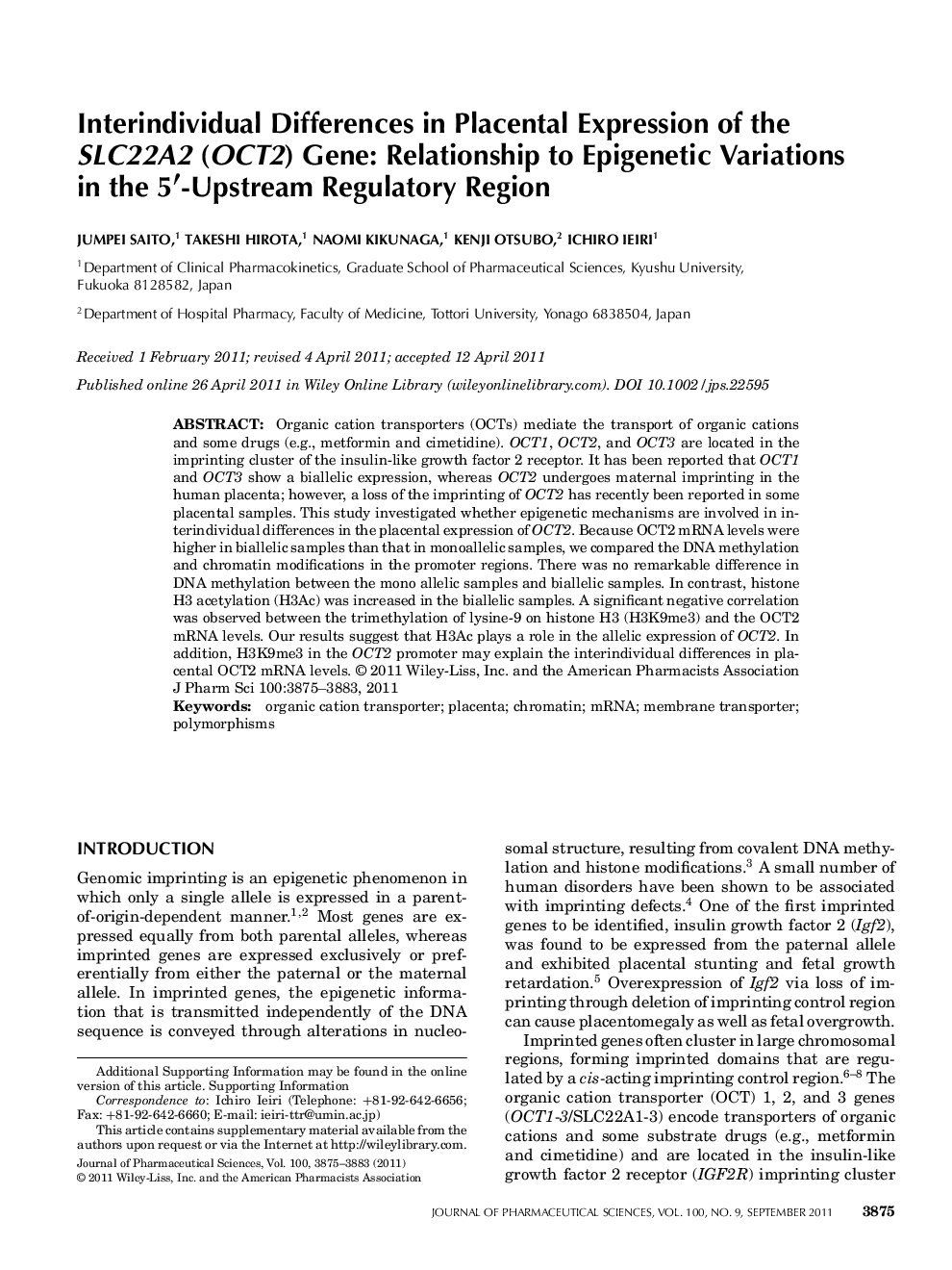| Article ID | Journal | Published Year | Pages | File Type |
|---|---|---|---|---|
| 2485492 | Journal of Pharmaceutical Sciences | 2011 | 9 Pages |
Organic cation transporters (OCTs) mediate the transport of organic cations and some drugs (e.g., metformin and cimetidine). OCT1, OCT2, and OCT3 are located in the imprinting cluster of the insulin-like growth factor 2 receptor. It has been reported that OCT1 and OCT3 show a biallelic expression, whereas OCT2 undergoes maternal imprinting in the human placenta; however, a loss of the imprinting of OCT2 has recently been reported in some placental samples. This study investigated whether epigenetic mechanisms are involved in interindividual differences in the placental expression of OCT2. Because OCT2 mRNA levels were higher in biallelic samples than that in monoallelic samples, we compared the DNA methylation and chromatin modifications in the promoter regions. There was no remarkable difference in DNA methylation between the mono allelic samples and biallelic samples. In contrast, histone H3 acetylation (H3Ac) was increased in the biallelic samples. A significant negative correlation was observed between the trimethylation of lysine-9 on histone H3 (H3K9me3) and the OCT2 mRNA levels. Our results suggest that H3Ac plays a role in the allelic expression of OCT2. In addition, H3K9me3 in the OCT2 promoter may explain the interindividual differences in placental OCT2 mRNA levels. © 2011 Wiley-Liss, Inc. and the American Pharmacists Association J Pharm Sci 100:3875–3883, 2011
